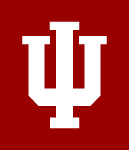Speech research using ultrasound

Malgorzata Cavar
Faculty Mentor
Malgorzata Cavar (College of Arts & Sciences)
Project Description
Many people know of ultrasound as a diagnostic method in medicine, but ultrasound imaging can be used also outside of medicine. We use ultrasound technology to investigate how sounds are pronounced. Students can get involved in a number of current projects. For example, we investigate the pronunciation of vowels in Norwegian which has 18 contrasting vowel, diphthongs not counting, to find out how they differ between each other, and in general, what differences between vowels can be found in different languages. In another study, we investigate the articulation of nasalized vowels in Polish, which sometimes break up into a sequence of a ‘normal’ oral vowel followed by [n] or [m]. Yet another data set focuses on palatalization of consonants in Polish and Ukrainian. Here, we want to find out what vocal tract and tongue shape is necessary to articulate palatalized consonants (those sounds that sound relatively softer, as in English "k" in 'keep' - as opposed to the sound "k" in 'cold'). We plan also to analyze how non-native speakers pronounce English vowels – how their vowels are different from those pronounced by native speakers of English – and why. This kind of research helps us understand the mechanisms controlling speech production, so to find out more about language in general, but also help language learners and teachers. No knowledge of Norwegian, Polish or Ukrainian is necessary (though it might be more interesting for you to learn more about pronunciation in languages you know).
Technology or Computational Component
If you decide to work with me you will work with audio and ultrasound files using AAA (software for the analysis of 2D ultrasound data), Matlab and Praat. You will work with different types of data files, convert formats, help to extract and annotate audio files, analyze ultrasound images, clean data, produce figures and graphs.

